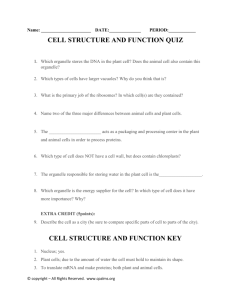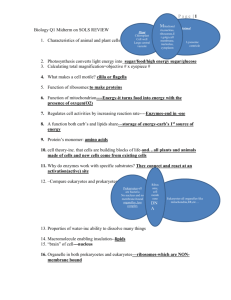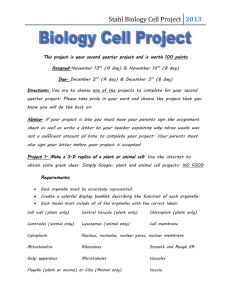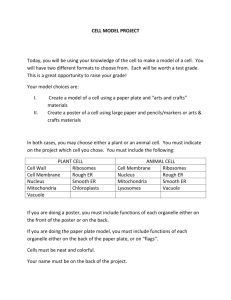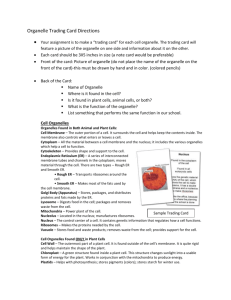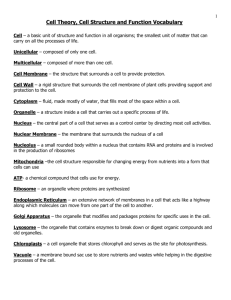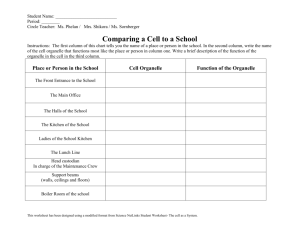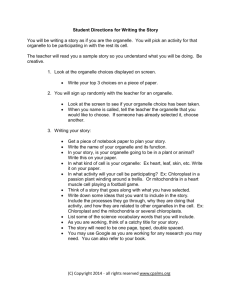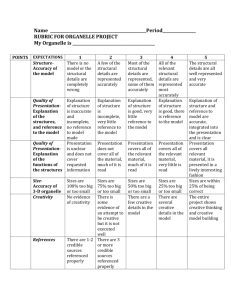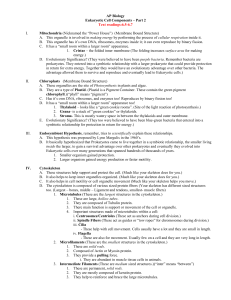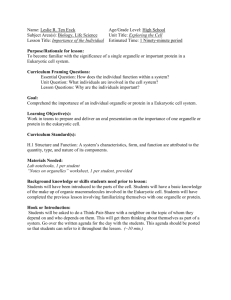4-22-13 Unit 3 Review (cell structure)
advertisement
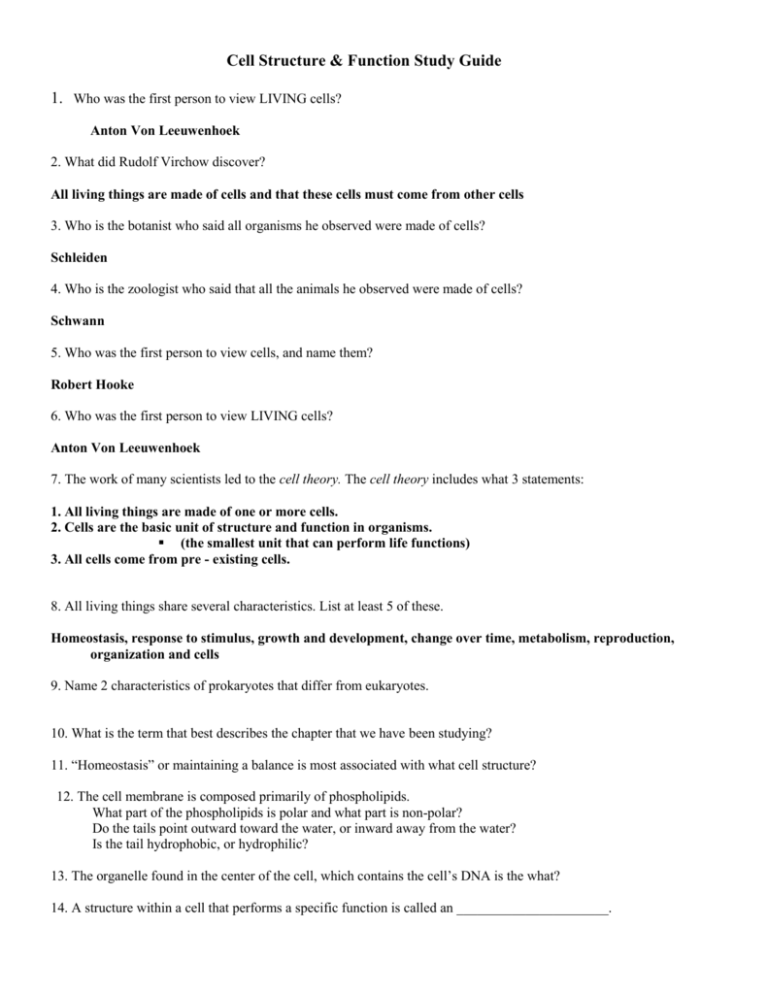
Cell Structure & Function Study Guide 1. Who was the first person to view LIVING cells? Anton Von Leeuwenhoek 2. What did Rudolf Virchow discover? All living things are made of cells and that these cells must come from other cells 3. Who is the botanist who said all organisms he observed were made of cells? Schleiden 4. Who is the zoologist who said that all the animals he observed were made of cells? Schwann 5. Who was the first person to view cells, and name them? Robert Hooke 6. Who was the first person to view LIVING cells? Anton Von Leeuwenhoek 7. The work of many scientists led to the cell theory. The cell theory includes what 3 statements: 1. All living things are made of one or more cells. 2. Cells are the basic unit of structure and function in organisms. (the smallest unit that can perform life functions) 3. All cells come from pre - existing cells. 8. All living things share several characteristics. List at least 5 of these. Homeostasis, response to stimulus, growth and development, change over time, metabolism, reproduction, organization and cells 9. Name 2 characteristics of prokaryotes that differ from eukaryotes. 10. What is the term that best describes the chapter that we have been studying? 11. “Homeostasis” or maintaining a balance is most associated with what cell structure? 12. The cell membrane is composed primarily of phospholipids. What part of the phospholipids is polar and what part is non-polar? Do the tails point outward toward the water, or inward away from the water? Is the tail hydrophobic, or hydrophilic? 13. The organelle found in the center of the cell, which contains the cell’s DNA is the what? 14. A structure within a cell that performs a specific function is called an ______________________. 15. Proteins are made on what organelle? 16. What is the packaging and distribution center of the cell? 17. In what organelle is a cell’s ATP (energy) produced? 18. The structure that regulates what enters and leaves the cell is called the what? 19. The vesicles containing digestive enzymes that break down proteins, waste, and cell parts, as well as destroys old cells when it is time for the cell to die are known as the what? 20. The difference in smooth and rough ER is the presence or absence of what? 21. The “framework” or network of thin tubes and filaments found within the cytoplasm that provide shape and support to the cell is known as the what? 22. Describe the functions of the cell membrane. 23. What organelle functions as a sort of “intracellular highway”, a path along which molecules move from one part of the cell to another? 24. The smallest units of life in all living things are what? 25. This organelle stores water, enzymes, and waste and can account for as much as 90% of the cells volume. 26. This organelle is where the cell’s ribosomes are made. 27. This organelle is a rigid layer that is made of cellulose which forms a stiff box around the cell. 28. This structure contains a system of flattened sacs (thylakoids) which contains the green pigment chlorophyll. 29. What are the organelles in plant cells that contain a green pigment? 30. What organelle is associated with photosynthesis? 31. Do plant cells contain mitochondria? 32. Do plant cells contain mitochondria? 33. Do plant cells have a large central vacuole instead of a Golgi apparatus? 34. Do plant cells have a cell wall instead of the plasma membrane? 35. Identify all of the structures in the cells above labeled L – P and V – Z. 36. What happens to the central vacuole in a plant cell if you forget to water the plant? 37. What is the difference between a cell wall and a cell membrane? 38. Where are chromosomes (DNA) located in an eukaryotic cell? 39. List all the differences between a plant cell and an animal cell. 40. What structure makes ribosomes? What do ribosomes make?
